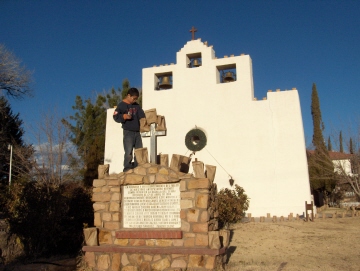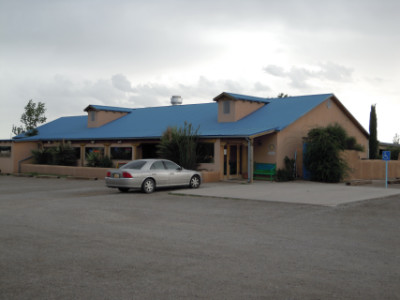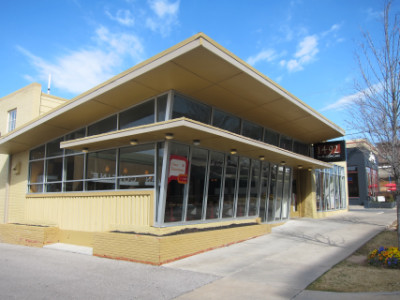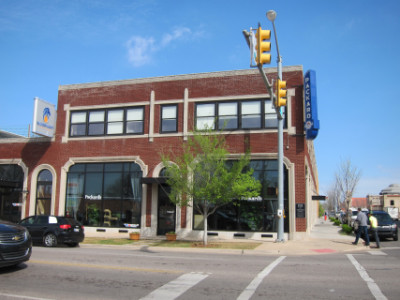Note: This is a narrative of the original walking tour on Jul. 18, 2016 which covered the east side of Classen Blvd. from N.W. 30th St. to Lang’s Bakery at 2524 N. Military Ave.
I thought I would give an update about what is going on in the Asian District, located along Classen Boulevard in Oklahoma City. The title should really be the Asian District on the East side of Classen from N.W. 30th to N.W. 23rd, but that is far too long. In any case, I was not able to cover everything in what is known as the Asian District, but this is a start.
The east side of Classen could be considered the heart of the district because it is where the two major super markets are located–Super Cao Nguyen and Chinatown. A number of important restaurants are also here, but a good number are located in the area I could not cover by foot, namely on the west side of Classen and along N.W. 23rd St.
I also recognize that there are some important restaurants north of N.W. 30th, such as Lee’s Sandwiches at 3300 N. Classen. In addition there is an area near N.W. 23rd and Pennsylvania (about a mile west of Classen) that is a spin-off of the Asian district, and which contains several notable Asian and other types of restaurants.
Pho Cuong
3016 N. Classen Blvd.

Pho Cuong
My walking tour began at Pho Cuong at the southeast corner of N.W. 30th and Classen. This is arguably the best pho in town (although this title has some serious competition by other restaurants such as Pho Kim Long at 1121 N.W. 23rd St.).
My favorite dish at Pho Cuong, though, is actually the Bánh Tam Tom Thit Nuóng, a vermicelli dish with grilled pork skin and shrimp (but it is especially interesting because of the coconut syrup that is served with it).
This is a very interesting restaurant for the menu items other than pho, and would be one of my first choices for this type of food.
VII Asian Bistro
2900 N. Classen Blvd.

VII Asian Bistro
VII (“Seven”) Asian Bistro is a very recent addition to the Asian District, and has an upscale interior (in the Asian District, having “Bistro” in the name is a giveaway for this).
I went inside and looked at the menu. It seems to cater to non-Asians in a good way (having menu items and food descriptions that can be easily understood). I thought the food looked like “real” Vietnamese food, but they just didn’t have a large selection of unusual or hard to find items.
Golden Phoenix
2728 N. Classen Blvd.

Golden Phoenix
Golden Phoenix had a major fire a few years ago, and they used the opportunity to upgrade the restaurant when they rebuilt. I have not eaten there since the fire, but I did go in to take a look. The menu is much more extensive than before, they have upgraded the interior to a “bistro” style, and they are now open daily (it used to be closed on Wed.).
As far as the food, I thought this was the best Vietnamese restaurant in Oklahoma City before the fire, and I expect that it still is. Of course, there are certain dishes at other restaurants that I like better. Also it seems that other restaurants are upping their game to serve more traditional style dishes than before. one thing that impressed me about Golden Phoenix was that they served the Bún Bò Huê with the congealed blood balls, and so far no other restaurant in town that I have tried has done this. Although this may not be everybody’s idea of good Vietnamese food, I thought it was good but probably not my favorite dish. One that I would really recommend, though, is the Vietnamese pork chop (something that is very good but does not contain any mystery ingredients).
Golden Phoenix also has a Chinese menu. I did not find it quite as impressive as the Vietnamese menu, but the food I had was authentic Cantonese cuisine, and I certainly would not complain about the Chinese food here.
Chinatown Supermarket
1228 N.W. 27th St.
This super market is next door to Golden Phoenix, and was also rebuilt after the fire. It is more small scale than the Super Cao Nguyen, but people say some things are better here.
The thing I always try to buy here is the Pearl Soybean drink by Mong Lee Shang (I like the strawberry flavor). This is a drink from Taiwan that has tapioca balls at the bottom, and is the best of about two dozen drinks I have tried from both Asian super markets.
Gia Gia
2624 N. Classen Blvd.
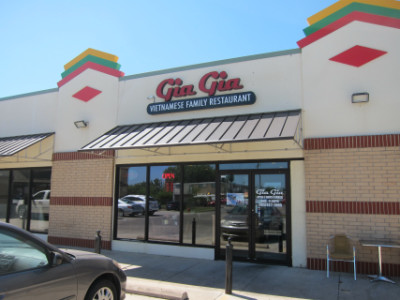
Gia Gia
Gia Gia (pronounced like the word “jaw” said twice very quickly) is another new restaurant that I have not yet tried. I actually went in and was intending to eat here, but there was a communication difficulty and I could not find out if the food had MSG.
I read that they have banh xeo, a dish I have been trying to find at a number of different restaurants. At Gia Gia it is an appetizer, though, and combined with the fact that I didn’t know whether it contained MSG, I decided to pass (but I plan to go back and see if I can find out). The good thing about the Asian district is that you can always find another place to go, but the bad thing is that I can’t possibly try all the dishes at all the restaurants that I would like.
Super Cao Nguyen
2668 N. Military Ave.

Super Cao Nguyen
This is the oldest and largest of the Asian super markets in the area, and is located one block east of Gia Gia (Military Ave. runs parallel to Classen). Outside of the one drink I buy at Chinatown, I get almost everything I want here. In fact, my only experience with a better Asian market was in Seattle (but even in Seattle there is a limited choice of Asian super markets as there is in OKC).
One thing that has never looked very appetizing to me here has been the food stalls. This is another example where I think someone from Asia might be better able to find the good items than I would.
The tea selection at Super Cao Nguyen is quite good, but the choice of specialized teas is not the same as can be found in Seattle.
Super Cao Nguyen also has a good selection of chopsticks, cookware, and teapots. The candy selection is very good, and overall the drink selection is much better than at Chinatown.
Some of my friends who buy Asian vegetables have indicated that they like Chinatown, but I think sometimes they also come here.
Mr. Pho
1133 N.W. 25th St.

The entrance to Mr. Pho, Banana Island, and Cafe Oasis next door to Super Cao Nguyen
Mr. Pho is one of the restaurants located in a small building adjacent to Super Cao Nguyen (go to the door just south of the super market’s main entrance). The reason I have not visited Mr. Pho often is that I have had more than one MSG reaction from the food. The food is very good, and of course the reason restaurants use MSG is for the flavor. Mr. Pho is also a very friendly place for English speakers, and they will tell you the food has MSG (along with anything else you would like to know about it). I certainly think this is a good restaurant for many people, but just not the ones with MSG allergies.
Banana Island
1117 N.W. 25th St.

Banana Island’s side entrance on N.W. 25th St.
This Malaysian restaurant is located in the same building, and is one of the restaurants I am very anxious to try. I would not really expect it to have Malaysian food that is the same I have had in other cities, but since I have never had a bad dish at any of these places I come with the assumption that all Malaysian food is worthwhile.
Banana Island changed owners a few years ago, and the reviews have not been as good since then. All I can say is that I went by the restaurant, looked inside, looked at the menu, and looked at the photos they had of the food. It looks like a very good restaurant, and I would assume the best instead of the worst here (it is possible they have already made some adjustments since reopening that addressed some of the customer complaints).
Cafe Oasis
1135 N.W. 25th St.

Cafe Oasis on the second floor
The sign outside indicated that this was a juice and tea place, but only afterward did I find out that they have a food menu (mainly rice and noodle dishes). The menu is in English and Chinese, and it seems that the food is Chinese style. Still, most people say that if you come here you should be sure to get one of the drinks.
Cafe Oasis is open daily except Sunday evening, and is on the second floor (it is accessible by an elevator).
Lido
2518 N. Military Ave.

The entrance to Lido and Lang’s Bakery on Military Ave.
This may be the oldest Vietnamese restaurant in the city, and has probably been more famous for its vermicelli dishes than for the pho or other items that are popular at other restaurants. Personally I think the vermicelli dishes may be the best in town if you stick to the basics (pork, chicken, egg rolls, etc.). The only thing is that the fish sauce seems very Americanized to me (still good, but I think a more authentic one is on the other side of Classen at Pho Ca Dao).

Lido Restaurant
Lido has always been one of the best restaurants for Vietnamese food initiates to try the food and find out what it’s all about. Lately I think it has become more than this by expanding the menu, and I think there are more exotic dishes to try if you wish. Personally, I usually stick with the vermicelli bowls here because it is hard to find anything better at other restaurants.
Lang’s Bakery
2524 N. Military Ave.

Lang’s Bakery
Lang’s Bakery has been on my radar for a long time, and I finally got a chance to eat here on my walking tour. I think it was a fitting choice among all the other good alternatives that are nearby, and certainly one that I would recommend. Banh mi sandwiches are the most popular item, but they also have more authentic versions of noodle bowls and noodle dishes than are found at Lido and some of the other “tourist” restaurants. The dish I tried was something that I think many people would like as well (No. 19 “Banh Uot Cha Lua). This was a rice sheet topped by a delicious Vietnamese ham.
The people here speak excellent English, and it can be an excellent choice for those who want something a little more authentic. If you would rather skip lunch, though, it is still an excellent place for desserts and baked goods. I paid $2 for a delicious French style flan, and the restaurant cited this as one of their best and most popular items.
General Comments (Jul. 2016)
The east side of Classen (outlined in this article) is the greatest concentration of Vietnamese restaurants in the city, while several large and well known Chinese restaurants are on the west side of the street. This is called the “Asian District” precisely because there is a mixture of different cultural traditions in the area, even including some Guatemalan and Middle Eastern restaurants. Other Asian cuisines (such as Thai and Indian) are located primarily along N.W. 23rd St.
The earliest tenants in the area, though, were Vietnamese refugees who came here after the Vietnam war. A recent Smithsonian article recounts the history of the Asian District, and I wrote a short summary of it in a post about Oklahoma City’s “Little Saigon.”
This post includes a few tips about a few restaurants, but this just scratches the surface. New restaurants are opening all the time, and many restaurants have so many menu choices that this is as much a dilemma as an opportunity. I have only covered a portion of the geographic area, and each time I go I seem to discover something new. For me, always having new places to try is a good thing.
Update Feb. 2019
The restaurants mentioned in this article have remained remarkably stable considering the change I noticed in 2016 compared to three years prior. Banana Island has now been replaced by Tsubaki Szechuan Restaurant (the address is 1117 N.W. 25th St.). I have not eaten there, but I have been a somewhat regular patron of Tsubaki Sushi & Hibachi on Memorial Road, and have found good quality food (Tsubaki Sushi was passing out menus for their new restaurant, Tsubaki Szechuan). I also found out from 405 Magazine that Mr. Pho has closed.
I have been to Golden Phoenix several times since 2016 and an now have some additional favorite dishes there. Most notably the curry on rice is the best I have found at a Chinese restaurant.
Also I wish to expand the article a little bit to cover some restaurants not included in the walking tour, starting at N.W. 23rd and Classen.
Pho Kim Long
1121 N.W. 23rd St.
The outside of the building says Hy Palace Asian Restaurant. Pho Kim Long is inside, along with the larger Chinese buffet which I assume is named Hy Palace. A friend brought me a takeout order of “Beef Noodle Soup” which was excellent (pho is beef noodle soup but I think this one differs in not having as much broth). In any case, I have not physically been to the restaurant but I can recommend the food.
Pho Lien Hoa
901 N.W. 23rd St.

Pho Hoa before it changed its name
Pho Lien Hoa is one of the oldest and most popular pho restaurants in the Asian District. It was originally named Pho Hoa, and seemed to be part of a chain of restaurants on the West Coast with the same name (I had several good meals at the one in Seattle). I have eaten at the one in Oklahoma City after the name change, and I think it is indistinguishable from the original Pho Hoa. The pho here is notable for all the different types of meat from which one can choose (and also its good quality). For the broth I could argue that other places are better but this one is good as well. They also have what they call “pork soup” that I thought had a better broth, and is my favorite item out of the ones I have tried.
Someplace Else Deli
2310 N. Western Ave.

Someplace Else Deli
Someplace Else Deli has been on Western within the loosely defined boundaries of the Asian District since the 1970’s (at the time the neighborhood was seeing the first influx of Vietnamese refugees that led to its unofficial designation as Little Saigon until the city recognized it as the “Asian District” in 2005). I went to Someplace Else for the first time in 2019, and found it to be an excellent sandwich shop that lived up to its reputation. Most of the sandwiches are made with Dietz & Watson meat, and I thought the house made Thousand Island dressing on the Reuben I ordered made it one of the best versions of this sandwich I have tried. The bakery part of it (brownies, etc.) is also a must try.
Taj Indian Cuisine
1500 N.W. 23rd St.
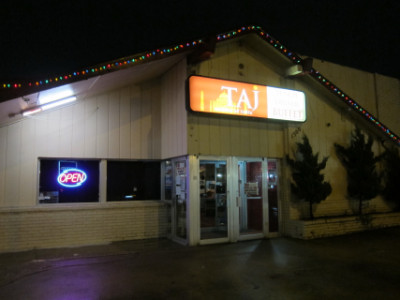
Taj Indian Cuisine
This restaurant has been a favorite of mine since it was on the Northwest Expressway in Warr Acres. Since it moved I have tried to eat here but I have found that it is mostly a buffet restaurant. At the old restaurant I almost always ordered something from the menu and had it prepared in the kitchen with my specification of a spice level. This is not possible at the restaurant on N.W. 23rd at lunch time because they only serve the buffet. It was also not possible when I recently tried to go in the evening but this was my fault (I went close to closing time). I am not knocking the buffet but I am trying to go when I can order from the menu. This is definitely on my wish list of things I want to try in the Asian District.
Pho Ca Dao
2431 N. Classen Blvd.

Pho Ca Dao
Here I did not try the pho, but the chicken vermicelli plate. This was prepared differently from the others I have tried in OKC, and I liked it very much (especially because the fish sauce seemed more authentic than most). I have wanted to go back and try some of their other dishes.
La Brasa
1310 N.W. 25th St.
I have not been to La Brasa, but when I found out that one of the partners operated the now closed Inca Trail on N. May Avenue, this was enough recommendation for me (I thought Inca Trail was the best Peruvian restaurant in the city, or that I have tried anywhere). Note that La Brasa is only open in the evening, and offers dishes from other areas of the world besides Latin America.
Grand House
2701 N. Classen Blvd.
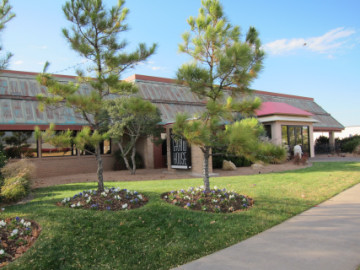
Grand House
Grand House has an extensive menu, dim sum on weekends, and is certainly one of the best authentic Chinese restaurants in the city. It is across the street from Golden Phoenix, and in many ways I think the two restaurants are similar. I think Golden Phoenix is better for “everyday” dishes such as noodles, congee, etc., as well as other dishes. For my favorite dish, though, pork and tofu hot pot, I think Grand House is probably the best in the city.
Fung’s Kitchen
3231 N. Classen Blvd.

Fung’s Kitchen
Fung’s is comparable to Grand House in that it serves Cantonese style food and serves dim sum on weekends. I think the dim sum here is better than at Grand House, but neither one is what I would call west coast quality (but both have certain items that are very good). Fung’s has a wide range of authentic Cantonese items (such as bittermelon), and in this regard is closer to Golden Phoenix. Really I have to say that Fung’s, Grand House, Golden Phoenix and Chow’s are the four premier Cantonese style restaurants in the city. (A fifth candidate would be Dot Wo, which recently closed its north side restaurant. The owners were related to the ones at Fung’s, and the flavor of the food at Fung’s will remind many people of Dot Wo. I understand the south side Dot Wo is still open but not having tried it, I cannot say if it is as good as its sister restaurants.)
























